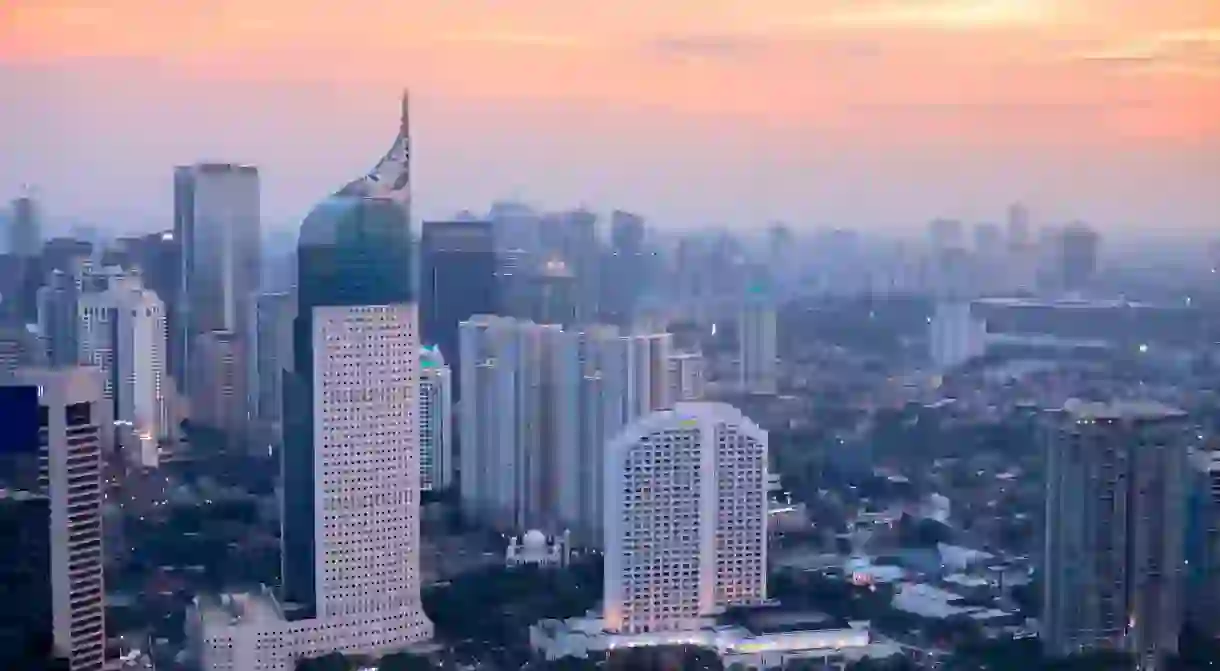The Most Impressive Buildings You Need to See in Jakarta

As the capital of Indonesia, Jakarta is graced with many of the country’s most important landmarks, from historical buildings to modern skyscrapers. Whether it is to admire them from afar while walking by, or to explore deeper, here’s our guide to the most impressive buildings you need to see in Jakarta.
Istiqlal Mosque
This translates as “the independence mosque” in Arabic, and was built to commemorate Indonesia’s independence. Realizing that the country is home to the largest Muslim population in the world, the then-government went all-out in constructing the grand mosque, which is still Southeast Asia’s largest. The building’s architecture is rich with symbolic meanings, representing either the country’s year of independence, the birthday of the Islamic prophet Muhammad, or the seven Islamic heavens. The grand architecture reflects both traditional Indonesian and Islamic culture. Tourists are welcome to tour the mosque, and many world leaders have had the pleasure, including former US President Barack Obama, King Salman of Saudi Arabia, German Chancellor Angela Merkel, and more.

Jakarta Cathedral
As Indonesia has the biggest Muslim population in the world, it may seem surprising to find a majestic Neo-Gothic Roman Catholic Cathedral at its heart. St. Mary of the Assumption Cathedral has been towering tall since 1901, just across from the massive Istiqlal Mosque. Dedicated to the Virgin Mary, the building is gracefully filled with adoration symbols, from centuries-old altars to statues and paintings. Built in a Neo-Gothic style, many of the cathedral’s materials and objects were sourced from the Netherlands, including its pipe organ and main altar. The cathedral comprises three main spires, one of which houses a museum showcasing relics of Catholic rituals.
Wisma 46
Completed in 1996, this building is considered ahead of its time. It was the country’s tallest building for almost a decade. Located in Jakarta‘s business center and surrounded by other skyscrapers, the building still stands out with its iconic fountain pen-shaped antenna on top of a gracious glass exterior. The building is home to offices, banks, restaurants, and cafés, and is still one of the most popular buildings in the ever-growing skyline of Jakarta.
National Monument
Opened in 1975, this historic building is a mighty symbol of Indonesia’s struggle and determination to reach unity and independence. The architecture embraces the philosophy of two of Indonesia’s traditional tools essential to producing rice, as well as symbols of the phallus and female organs, to promote balance and harmony between different forces. The lower part of the building houses the National History Museum, which presents elaborate dioramas of the country’s history, from pre-historic to post-independence Indonesia. The higher platform of the monument, at 115 metres (377 ft), serves as a viewing deck from which tourists can enjoy an unrestricted view of Jakarta. Even higher than the viewing deck is a flame-shaped gold foil.
Museum Nasional
The National Museum of Indonesia is located just across from the National Monument. It’s also known as the Elephant building due to the bronze elephant statue in its forecourt. It was first built by the Dutch during the colonial era, and reflects some European architectural elements, with towering pillars. The building has since been managed and developed further by the Indonesian Government, including the addition of a new wing. The building also has a Greek-style inner courtyard, letting in natural light and air. As a museum, this building houses collections from all over the country.
Fatahillah Museum ( Jakarta History Museum)
This Neo-Classical building was built as a city hall by the Dutch in the early 1700s, and was inspired by the Dam Palace in Amsterdam. After independence, the Indonesian Government restored and repurposed the building as a museum, which opened in 1974, showcasing historical relics found in Jakarta.

The Energy Building
One of the most modern building in Indonesia, the Energy building was designed by renowned architect Kohn Pederson Fox. Its claim as an artistic intelligent workspace is based on firm grounds, with world-class features aimed at building a conducive working environment that offers better productivity. Located in one of Jakarta’s busiest business centers, the building still manages to appear aesthetically pleasing for both those working inside or admiring from the outside.
Did you know – Culture Trip now does bookable, small-group trips? Pick from authentic, immersive Epic Trips, compact and action-packed Mini Trips and sparkling, expansive Sailing Trips.













